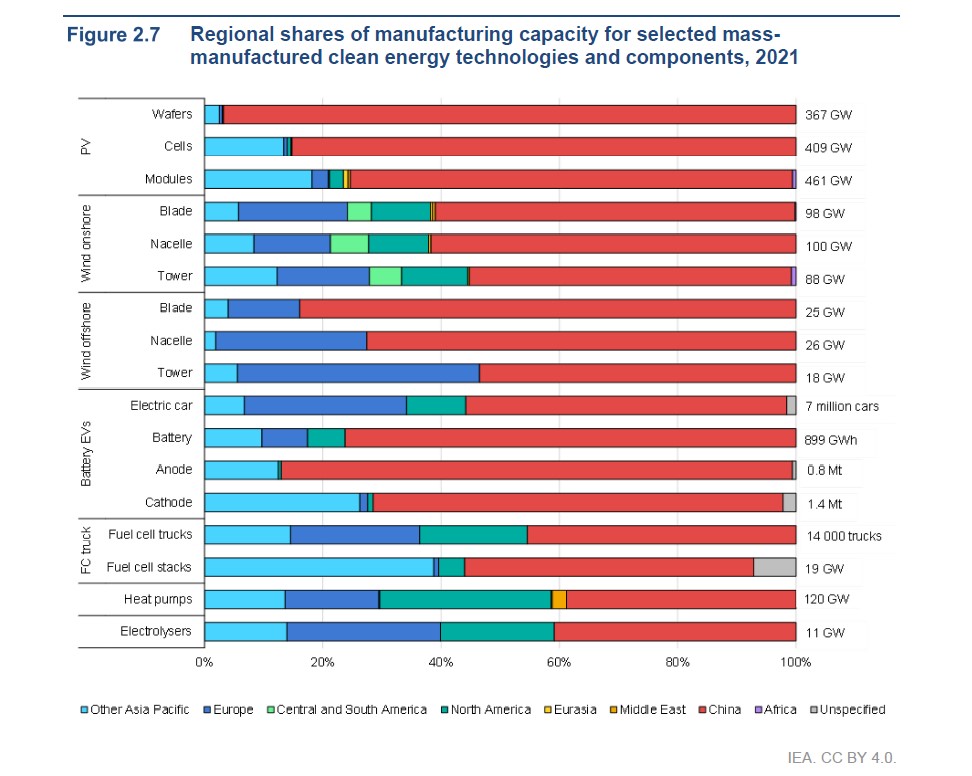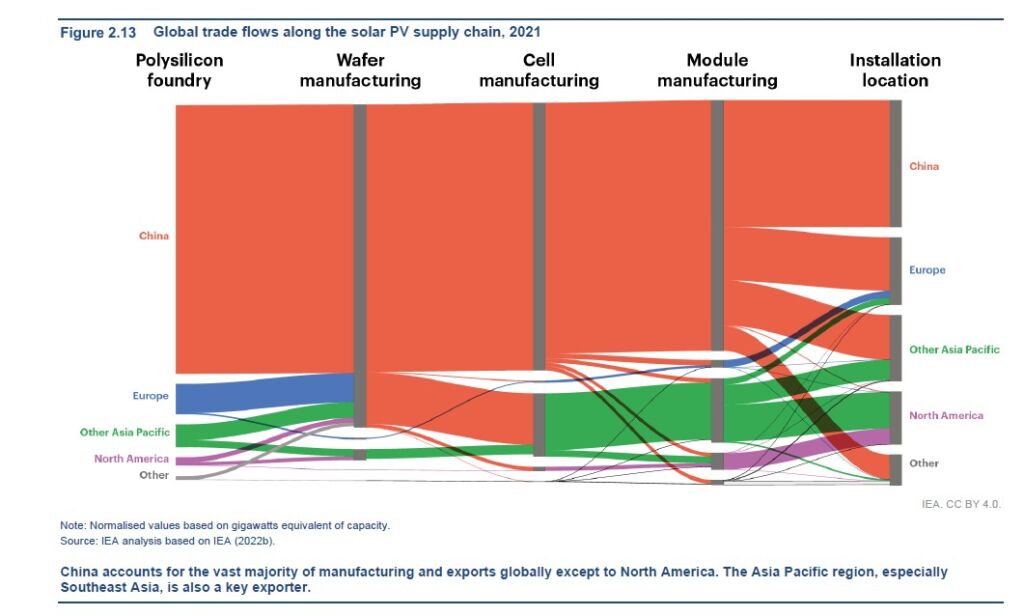International Energy Agency report: ‘China dominates mass-manufactured clean technologies’
A new report from the International Energy Agency (IEA) entitled Energy Technology Perspectives 2023 shows that China is the largest producer of wind and solar components, and it isn’t close.
According to the report:
China dominates the production of mass-manufactured technologies and
components thanks to low manufacturing costs, a strong base in materials
production and sustained policy support on these industry segments.
The IEA report leaves out any mention of China’s use of slavery in its solar supply chain, but it correctly notes that China controls at least half of the output of most of the main such technologies, notably solar and electric vehicle batteries.
China’s share in the manufacturing of silica-based solar photovoltaic modules exceeds 70 percent, almost double the country’s share of global demand, with “Other Asia Pacific” accounting for an additional 20 percent and the remainder built in Europe or the USA.

The flow graph below shows how virtually every solar panel on the planet has been through China’s supply chain at some point in the manufacturing process. Even polysilicon produced in European or “Other Asia Pacific” countries ends up being shipped to China for wafer manufacturing.

Most of these wafers remain in China for cell manufacturing, but some of the Chinese wafers are shipped to Other Asia Pacific nations for cell and module manufacturing. But why would China send wafers to other countries to manufacture cells and modules instead of producing them in country?
The New York Times reports that China funnels these products through southeast Asian countries to evade tariffs on Chinese solar components that have been levied by the United States. The graph above demonstrates this reality because it shows virtually all of the exported solar modules manufactured in “Other Asia Pacific” end up in the United States.
The Times notes:
Typically, companies that are found to be circumventing U.S. tariffs would immediately be subject to higher duty rates to bring their products into the United States. But in an unusual measure, the Biden administration in June pre-empted those higher duties by announcing a two-year pause on any tariff increases on solar products.
At the end of the day, virtually every solar panel in the United States has been part of the Chinese supply chain, which means it is part of a supply chain that the U.S. Government believes is dependent upon slave labor and genocide.
Instead of building thousands of megawatts of solar panels that were built by slaves and only work 18 percent of the time, Minnesota should look to replace its existing coal plants with nuclear reactors when they have reached the end of their useful lifetimes, which would ensure we have reliable, affordable, and slave-free energy for generations to come.